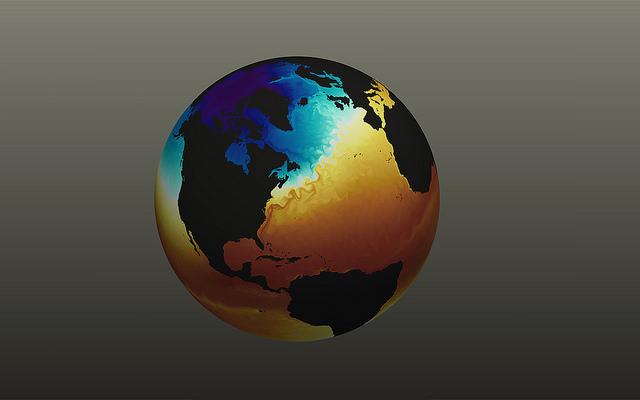
Janette Lindesay, Professor of Climatology at the ANU, and the CSIRO’s Mark Howden have pointed out that 2015 was the hottest year on record since modern record-keeping began in 1880.
Lindesey and Howden note that: ‘Every month since February 1985 has been warmer than average, and 2015 is the 39th consecutive year with above-average annual temperatures in an uninterrupted run that began in the mid-1970s. 10 months in 2015 beat previous records for those months’. April 2016 was the warmest April month on record globally and in Australia. It was the 12th consecutive warmest April on record.
These developments were highlighted by Lieutenant General Angus Campbell in his opening address to the 2016 Chief of Army’s Exercise in Adelaide on 6 September.
General Campbell’s speech had a very strong focus on climate change. He pointed out that the top 10 most-at-risk countries with exposure to sea level rise by 2100 are all in the Indo–Pacific. Over 138 million people are at risk. Over 500,000 people live in the small Pacific and Indian Ocean island states that may become uninhabitable between 2050 and 2100.
An unstable planet, he argued, was one of the three issues he believed central to the security challenges we’ll encounter in redefining boundaries for the 21st century land force. (The other two were what he called ’empowered individuals’ and ‘assertive states’, although he said there was some degree of interplay between the three drivers.)
Let me pick up on General Campbell’s specific comments on climate change made at this month’s Chief of Army Exercise, as they constitute the most significant intervention to date from a serving Australian Defence leader. (And for this, he should be congratulated.)
The General said that climate change associated with global warming is causing our planet to become unstable.
He noted that we ‘don’t actually know for certain where the problem of climate change will take us’. That’ll depend on how correct some of the assumptions in our models are, and the effectiveness of mitigation and adaption strategies. But General Campbell pointed out that for military organisations ‘that excel in long-term planning and harnessing great resources and which will be expected to assist in some way, those questions are immediately relevant’.
General Campbell said that Will Steffen of the ANU and the Climate Council was correct in labelling climate change as ‘the ultimate threat multiplier’.
The Chief of Army said that armed forces have their role to play in response to climate change, not just in adopting ‘best practice’ on environmental management and energy needs, but increasing the use of Defence assets in support of humanitarian assistance and disaster relief operations. (I’d note here that the two Canberra-class Amphibious Assault Ships are absolute ‘game changers’ and may be used in the case of catastrophic disasters at home.)
He summed it up by saying that the scale of climate change problems, their unpredictability, and the level of support required from land forces are ‘key issues for us to better understand’.
This is all good stuff and picks up the fact that the latest Defence White Paper, unlike the White Papers in 2009 and 2013, does acknowledge climate change as a factor in defence planning.
But as I’ve argued before on The Strategist, our major ally is going a lot further.
The US military is transforming itself into a climate resilient force: the US Navy and US Army Corp of Engineers have mainstreamed climate change across their organisations, policies and plans.
The US really ‘gets’ General Campbell’s point that a changing climate poses significant threats.
These risks alter the roles and missions that our military undertake as a result of the physical alteration of the operating environment, as well as changes to the nature, frequency and distribution of conflict.
Sea level rise, increasing temperatures, extreme heat waves and longer and more intense droughts, also portend changes to the way Defence manages and operates its vast estate.
But Defence infrastructure has been largely designed and built on the assumption of a stable climate with known variability. Rising sea levels will pose medium to long-term risk to the Defence estate: disrupting and damaging essential services including buildings, roads, runways, marine infrastructure, electricity supply, communications, water and sewerage and other essential utilities.
There’s also likely to be greater vulnerability of military ranges. The State Mine Fire near Lithgow three years ago was caused by a routine army training activity that, scheduled months in advance and outside the normal fire season, was assumed by the officer-in-charge to be low-risk. But fire seasons are lengthening and conditions are dryer and more volatile.
Climate change calls for a revision of how everyday military training activities are planned and how risks are assessed.
Picking up General Campbell’s important message on climate change as a key security driver, Defence should now appoint a senior military leader to act as a single strategic voice for climate change national security issues, including preparedness and capability.
There’ll always be Donald Rumsfeld’s ‘unknown unknowns’. But those institutions able to identify and adapt to the known risks—the ‘known unknowns’—like a changing climate, will be best positioned to meet the threats.